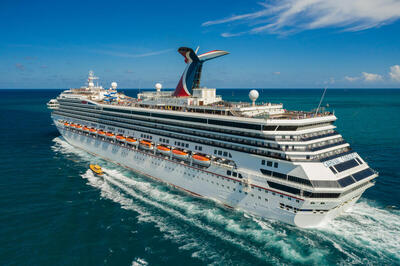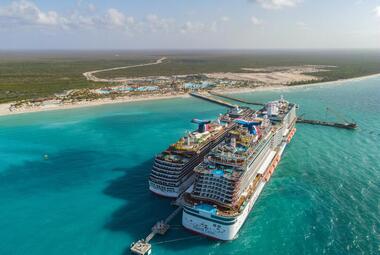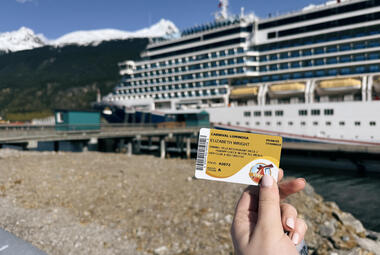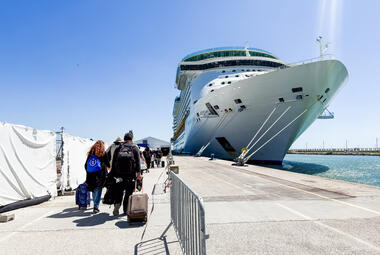Unlike land-based vacations, cruises take place mostly on open water. Enter the question: "Will I feel a cruise ship rocking?"
Having been on over 20 cruises, I can attest that whether you'll feel a ship rocking or not depends on several factors. I've been on some incredibly smooth sailings, but I've also been on some cruises that traversed through choppy waters.
Even if you aren't prone to motion sickness, it's advisable to operate under the assumption that you'll feel movement. Generally speaking, if a ship is sailing through good weather at a consistent speed, you won't be able to feel much rocking. Still, conditions can change quickly at sea, and if you aren't prepared, you could be placed out of commission while battling symptoms of seasickness.
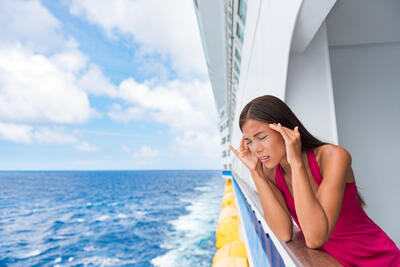
If you are concerned about feeling the ship rock, don't worry! It's normal for cruise passengers to feel some movement. Thankfully, there are some strategies you can employ to minimize discomfort, but we'll get more into those later.
On most ships, you'll likely feel a slight vibration, especially on a lower deck. Depending on your cruise cabin location, you may feel extra movement when the ship is maneuvering into port and dropping its anchor.
Thankfully, you can rest easy knowing it won't be a sudden jolt like a car slamming on its brakes. Instead, the vibrations usually are more noticeable than when sailing at sea, with hangers in the closet coming alive a bit more.
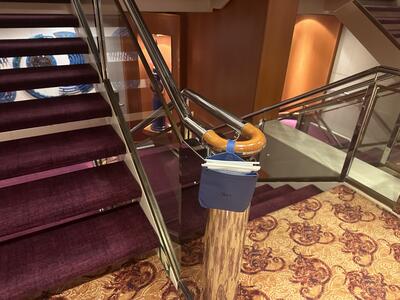
I've noticed that early morning is when I'm most likely awoken by those vibrations. I remember sailing on Symphony of the Seas last year and was taken aback by how much movement I felt as the ship navigated into one of our three ports of call.
I'll typically feel the ship vibrating more when eating in the Main Dining Room, too. If you're prone to motion sensitivity, I recommend taking over-the-counter medication before dinner. Otherwise, you might find your appetite wiped! There have been instances when I've battled severe nausea while trying to enjoy my meal, which isn't a fun way to spend vacation.
If you have to take a water taxi, or tender, ashore, you will most likely feel that tiny vessel rock while it sails from your cruise ship to land because they are more susceptible to waves and swells. However, you won't feel much movement on the cruise itself, as it won't have to maneuver through small channels to reach the pier.
Read more: How to avoid cruise motion sickness
Role of the weather and sea conditions

On calm days with clear blue skies and silk-like waters, you may notice hardly any motion at all. In fact, it might be hard to believe you're on a moving vessel! Conversely, if there's inclement weather and you encounter rough seas, you might feel the ship sway more.
Some bodies of water are more prone to rough conditions than others. Someone considering a cruise to Antarctica, for example, might be dissuaded because of the infamous Drake Passage.
Similarly, sailing through the North Sea is typically accompanied by thick fogs and choppy waters, as it's susceptible to high winds and waves. Take caution when booking cruises to Northern Europe, including Norway, Iceland, and the British Isles.
Stabilizers

Modern cruise ships are equipped with stabilizers that help reduce the motion felt onboard during tough seas. The fins or routers are mounted beneath the waterline and help reduce the ship's swaying.
Generally, the newer the ship, the more advanced the stabilizers are. While this should not be a major concern for cruisers, it can make a difference for those prone to motion sickness.
Tips to prevent seasickness

Seasickness occurs when there's a conflict between your eyes, the motion of your ship, and the vestibular system within your inner ear. This system helps create a sense of balance and spatial orientation by sending information to your brain about motion, the location of your head and body in relation to your surroundings, and balance. If what you see varies from what your inner ear senses, you might start to feel dizzy and nauseous.
While I'm far from a novice cruiser, I find myself feeling seasick from time to time. Most recently, I relied heavily on my over-the-counter motion sickness patches while sailing to Bermuda on Vision of the Seas. We encountered rough seas after departing Baltimore, and I noticed near-immediate relief when I applied the small patch behind my ear.
There are tons of remedies out there for seasickness, and what works for you might not work for someone else. While I always recommend patches, Dramamine and Bonine, as well as acupressure bands, are also popular options.
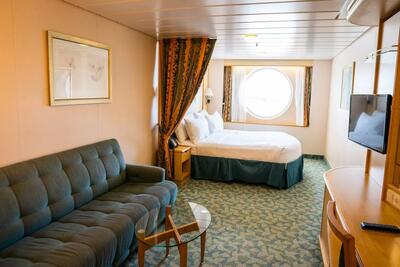
Rather than saving money and booking a guaranteed stateroom, you might want to consider selecting your cabin when booking. Cabins in the middle of the ship (AKA midship) tend to feel less motion than those in the front (forward) or back (aft). Many cruisers also suggest booking a stateroom on a lower deck.
I've also found that fresh air does wonders when I'm not feeling too great. Plus, staring out at the horizon will help you regain your sense of balance.
Green apples and ginger are natural remedies that can help curb the negative symptoms of motion sickness, too. While you can't bring green apples onboard, they're usually available in the ship's buffet or another grab-and-go eatery.
Read more: Cruise ship cabins: Everything you need to know

In short, whatever method you prefer—whether over-the-counter medication or a natural remedy—the key is finding out what works best for you and preparing in advance.
When sailing on Carnival Vista last year, the ship's store didn't have any seasickness medication available the first night. I overheard someone asking for Dramamine, and they were disappointed when they were told they had none.


